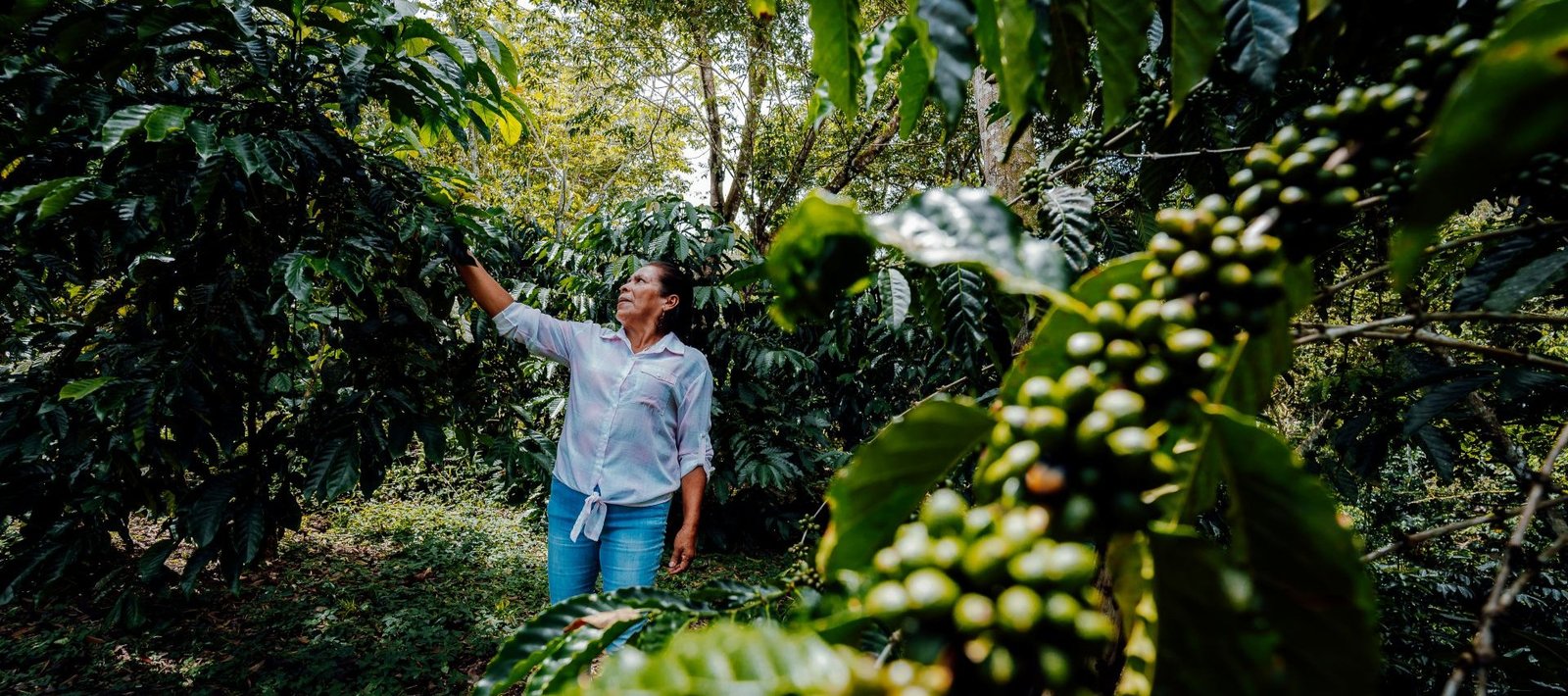
Cuencafé: Behind the Scenes at the Panama Canal
In the Panama Canal watershed, hundreds of coffee growers cultivate coffee that protects the water, land, and life. Cuencafé is more than a brand: it is a model of sustainable development dressed in the clothes of a farmer. This article appears in the August edition of our magazine to commemorate the Canal’s inauguration on August 15, 1914.
By Alexa Carolina Chacón
Photos: Rommel Rosales
The history of the Panama Canal is usually told in numbers, locks, and vessels. But there is another history that reaches back to well before ships reached the Isthmus: the history of water. The mountains that surround the Cirí and Trinidad Rivers —one of the areas that serve as sources of rainwater for the Canal reservoirs— are also a source of coffee. This coffee is planted by farmers who, by protecting their land and providing sustenance, ensure the future of one of the world’s most important trade routes and one of the primary sources of water for Panamanians.
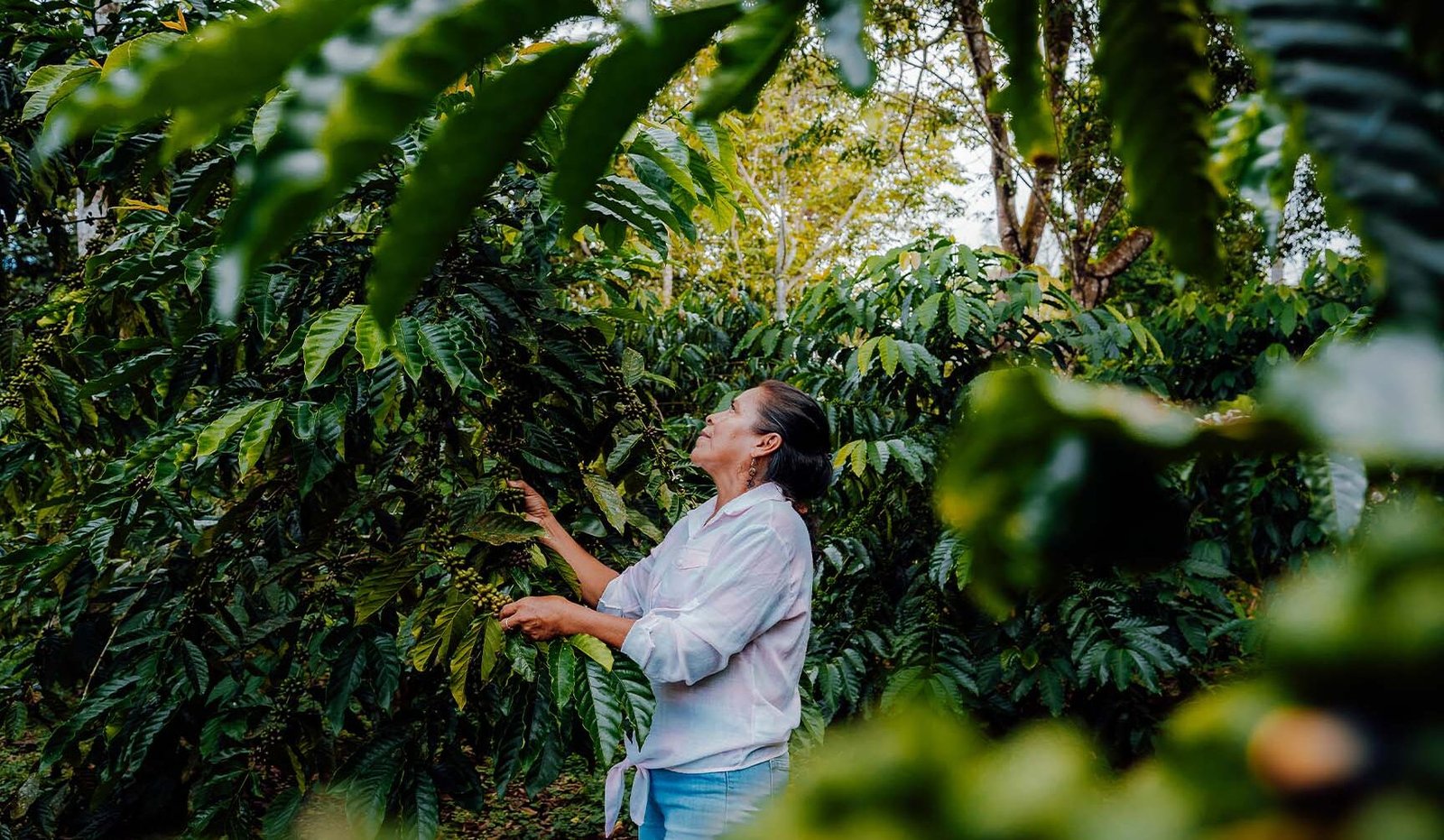
This is the birthplace of Cuencafé, a coffee cultivated with shade, patience, and purpose. We visited the coffee estates of Liduvina Rivera, in Las Negritas, and Yalisbeth Gil, in Las Gaitas, set in communities of the Trinidad River sub-basin in the province of Panamá Oeste.
Purposeful Coffee: From the Canal Basin to the World
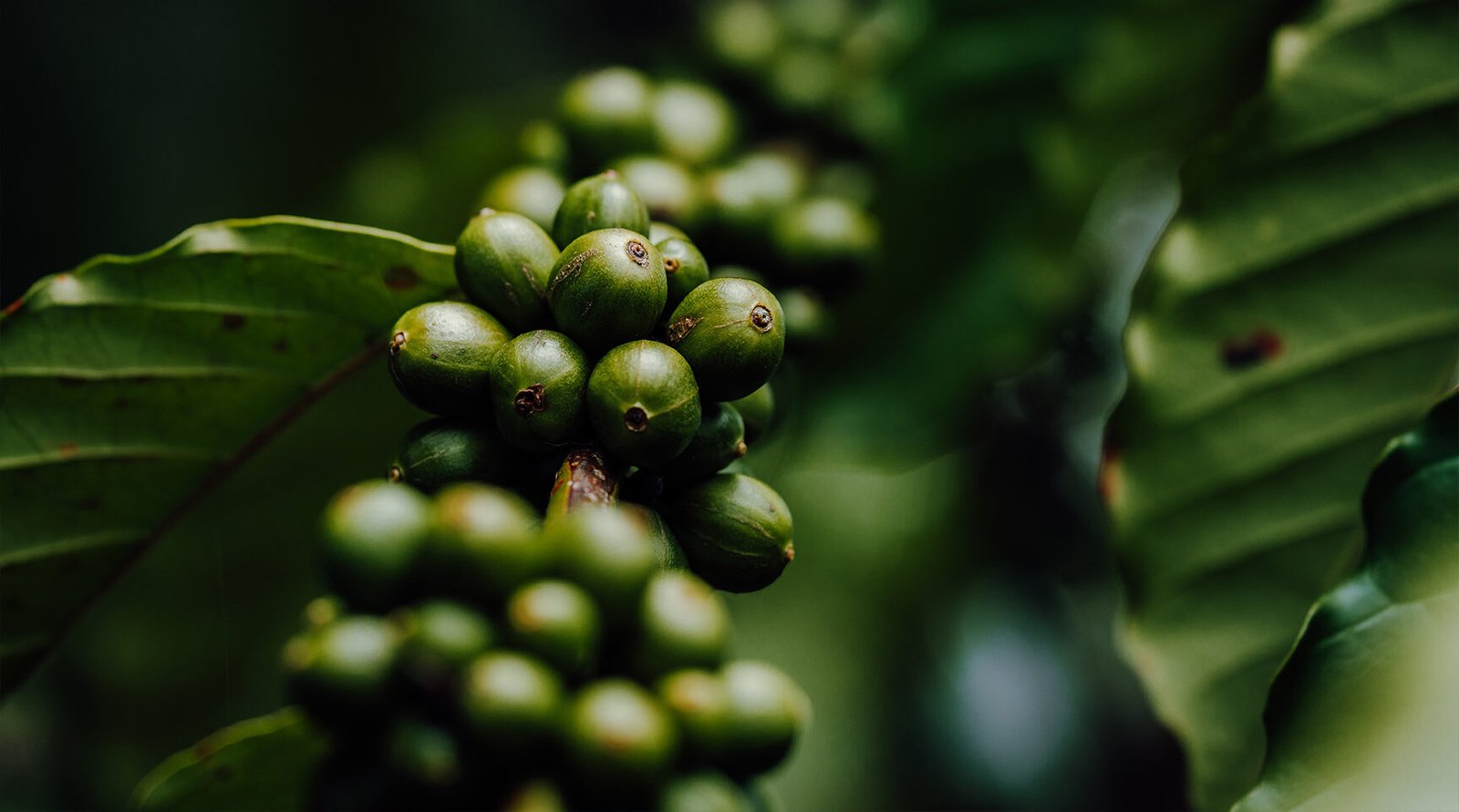
Cuencafé is the brand created by the Association of Coffee Growers of the Cirí and Trinidad Rivers Sub-basin of the Canal Watershed (ACACPA). It emerges from the watershed growers’ shared dream of having their own coffee, selling it for a fair price, and at the same time, caring for the land on which they live. Membership now includes more than 1,750 coffee growers in 148 communities; in conjunction with the Panama Canal Authority, they have planted more than 9,375 acres of coffee in the shade.
Their model is what makes them unique: a circular economy in which coffee becomes a tool of conservation and development. Here, producing coffee means planting trees rather than cutting them down, and of course, it means using compost rather than pesticides. “Its origins are linked to the Panama Canal’s partnership with watershed residents to manage the land in a way that seeks to protect water resources and,` at the same time, promote improved living conditions in rural communities,” explains Raúl Rivera, a supervisor specializing in environmental protection. The residents of these areas care for the environment, and in turn, the land provides them with sustenance.
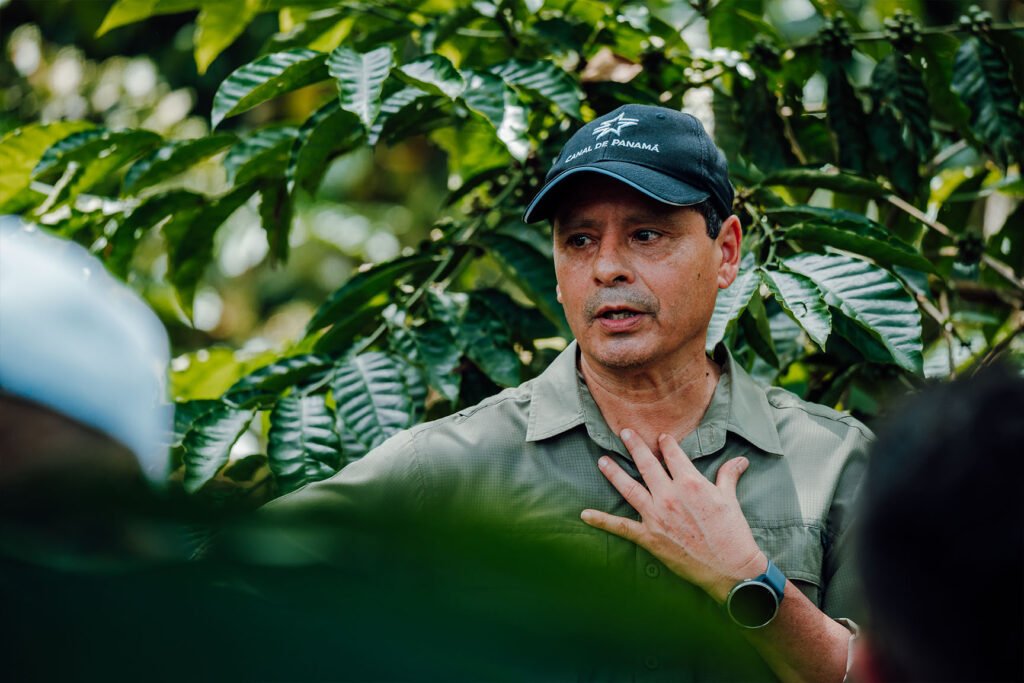
Conservation Through Coffee: Protective Agroforestry
These coffee plantations are as important to the protection and sustainability of the Canal watershed as the enormous logistical efforts involved in operating this giant work of engineering. This agroforestry system successfully creates permanent vegetation cover that protects the soil and water resources, while also contributing to carbon sequestration and the conservation of wooded areas, which are essential to biodiversity and the water cycle.
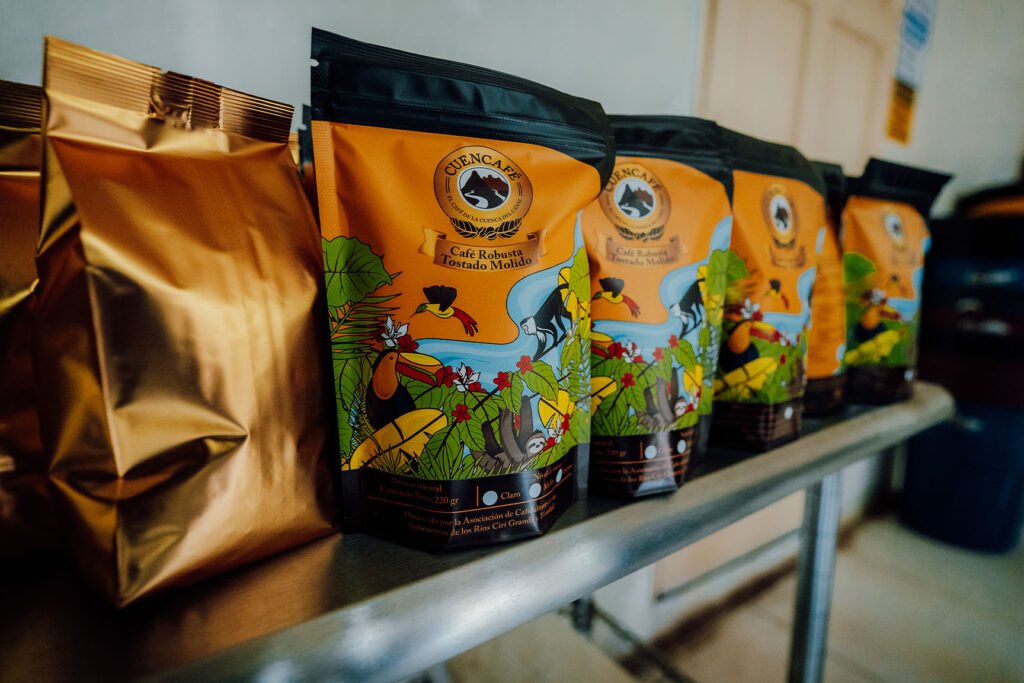
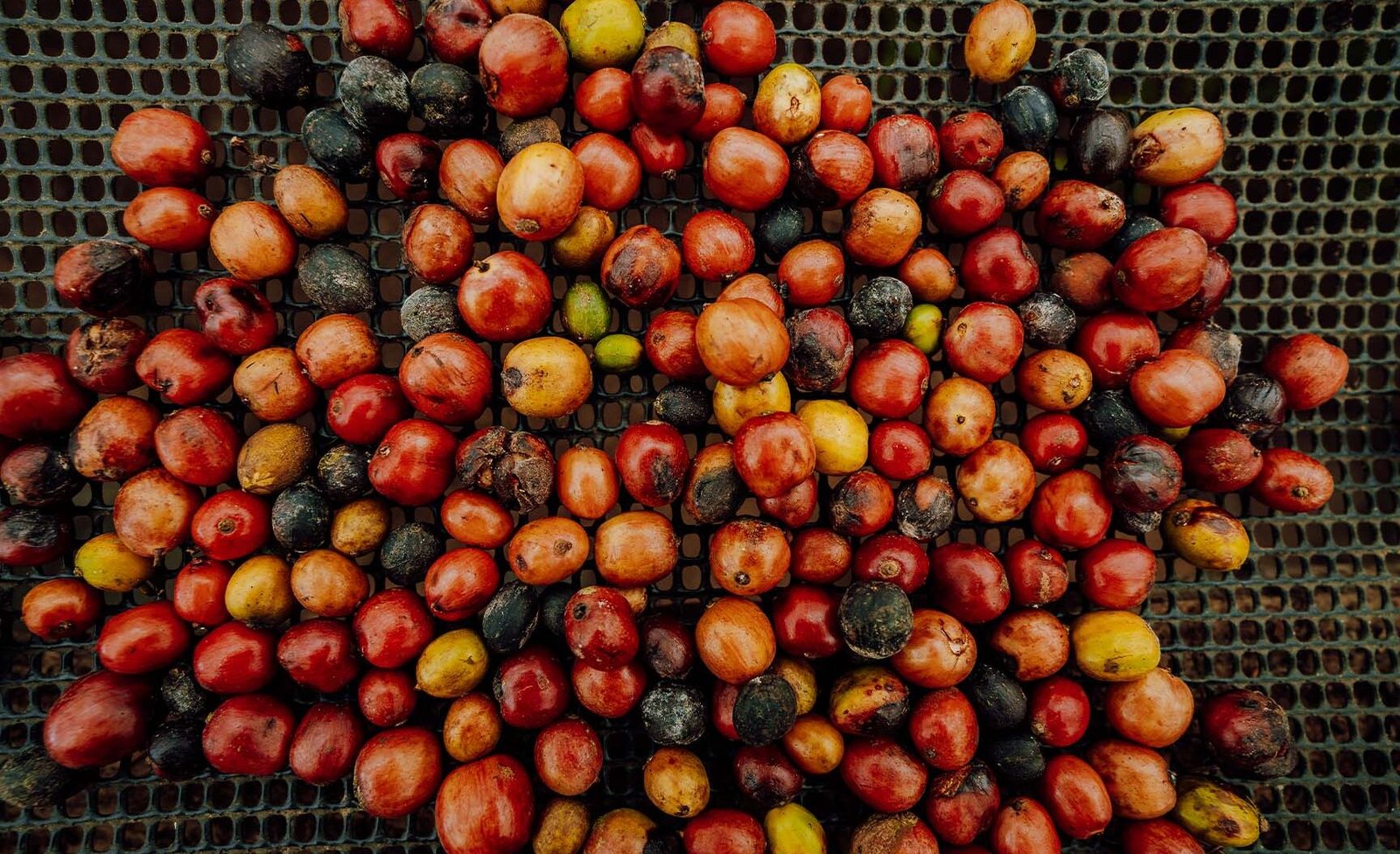
The robusta coffee grown in the basin is planted in the shade of fruit and timber trees, alongside banana trees that nourish and protect the soil. Production follows the natural cycle of the rains, and the beans are sun dried, a process that does not contaminate the rivers with depulping water. The coffee plantations, in turn, implement sustainable practices such as living terraces, natural barriers, and the use of organic fertilizers. This makes it possible to conserve the soil, encourage biodiversity, and guarantee that a constant supply of clean water flows into the reservoirs. Every coffee bean cultivated with respect ensures another drop of water for the country.
Cuencafé distills the flavor of the hard work that lies behind it. The coffee is available at outlets like Supermercados Riba Smith, Up Market, Gran Deli Gourmet, Chinese Garden, El Mirador Food & Coffee en Cerro Campana a mongothers.

Water, Woods, and Coffee: Part of the Same History
Cuencafé not only mitigates climate change but also helps regulate the water cycle. Water resources are indispensable to the Panama Canal, and not only for the passage of ships. Protecting the water secures the availability of potable water for more than half the population of Panama, as well as climatic resilience in the face of ever more frequent droughts.
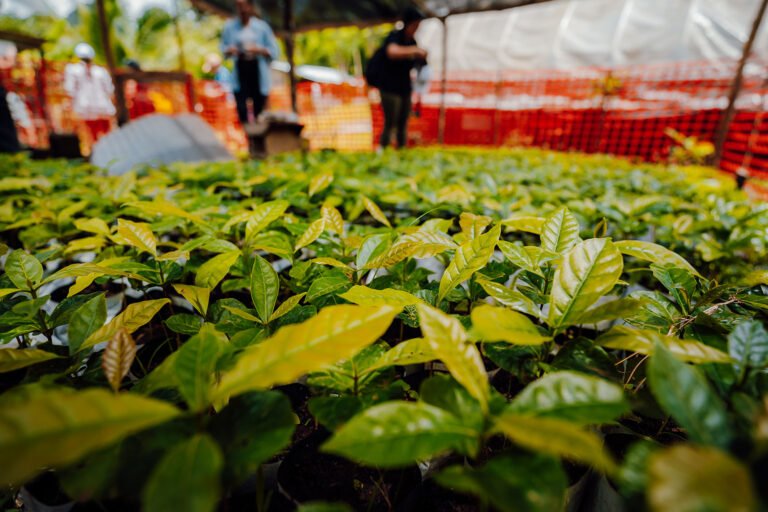
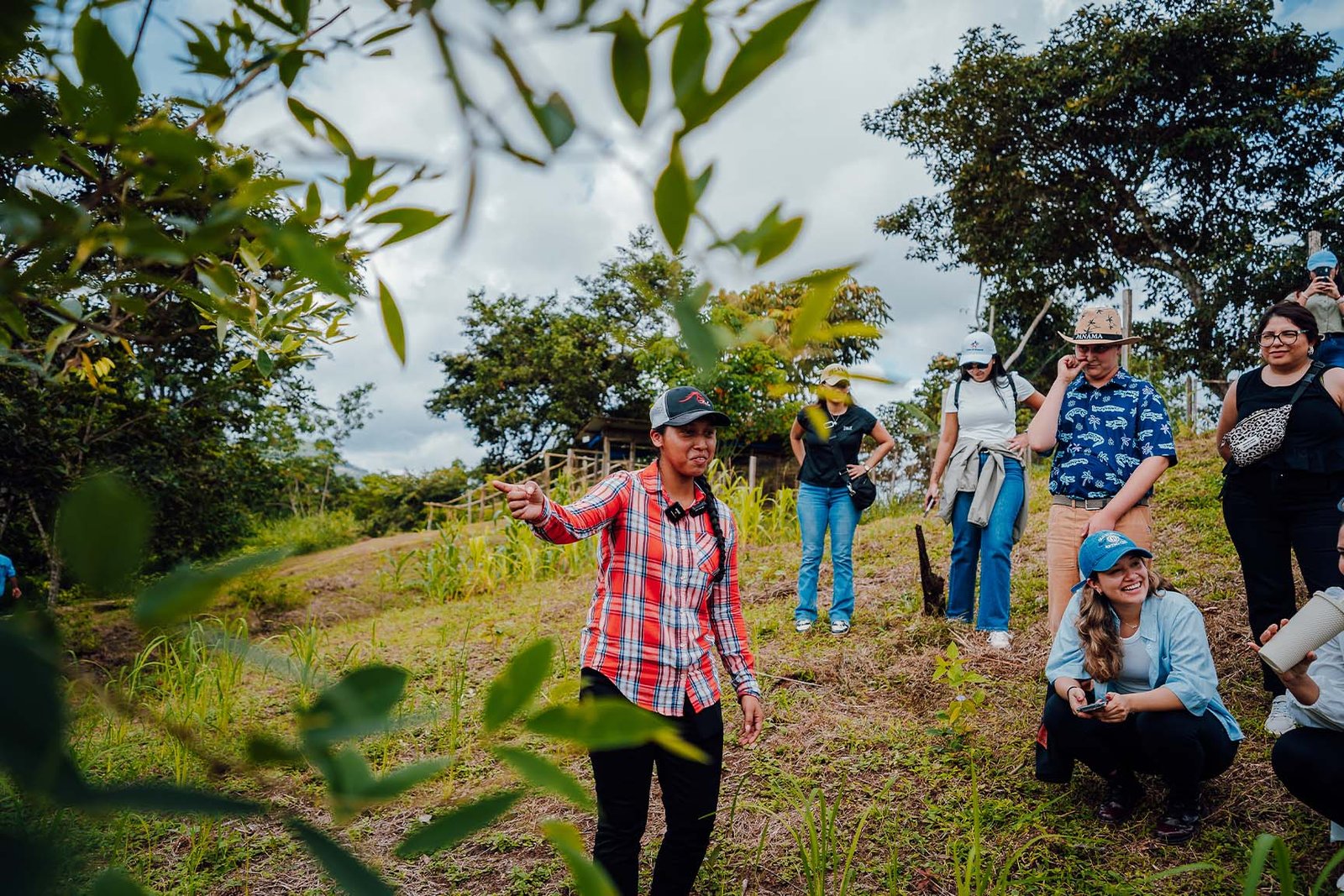
The Panama Canal watershed spreads over some 1,274 square miles and includes parts of the provinces of Panamá, Panamá Oeste, and Colón. It is composed of several sub-basins, such as those of the Chagres, Cirí, and Trinidad Rivers. It also encompasses the Gatún and Alhajuela reservoirs, which are essential to proper operation of the Canal.
At estates such as those of Liduvina and Yalisbeth, the forests become natural sponges that absorb the rain and release it little by little. Conserving vegetation cover and avoiding agrochemicals protects rivers such as the Cirí and the Trinidad, while safeguarding water flow.
Conservation and Harvest Go Hand-in-Hand for Coffee Growers
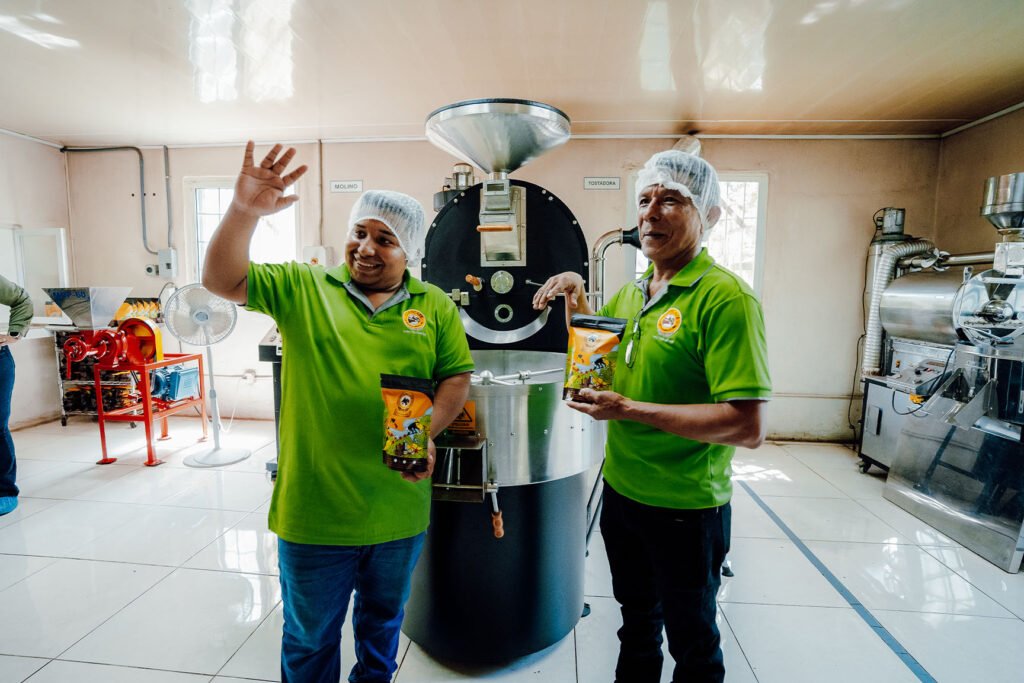
Some of Cuencafé’s greatest assets are its leading lights: female coffee growers like Liduvina Rivera, whose estate in Las Negritas is blessed with mountains, silence, and young coffee plants. Her smile is warm, and her face beams with pride as she welcomes us to her coffee estate. She tells us that her favorite season is harvest time, when she needs to watch over the coffee cherries in the fields. The ones she shows us are still green. Unlike specialty coffees grown in Chiriquí, robusta coffee cherries are prolific, nearly blanketing the bushes. Here in Panamá Oeste, the sun beats down in the morning, but rains appear in the afternoon, which helps keep the plants happy.
Cuencafé represents the local flora: fruit notes, rounded body, and an aroma that evokes moist earth and forest. Small-scale production and careful processing ensure a more authentic cup of coffee. It was at this farm that we tasted Cuencafé for the first time. It has body and personality and goes down perfectly without sugar; a responsible coffee, and also an excellent one.
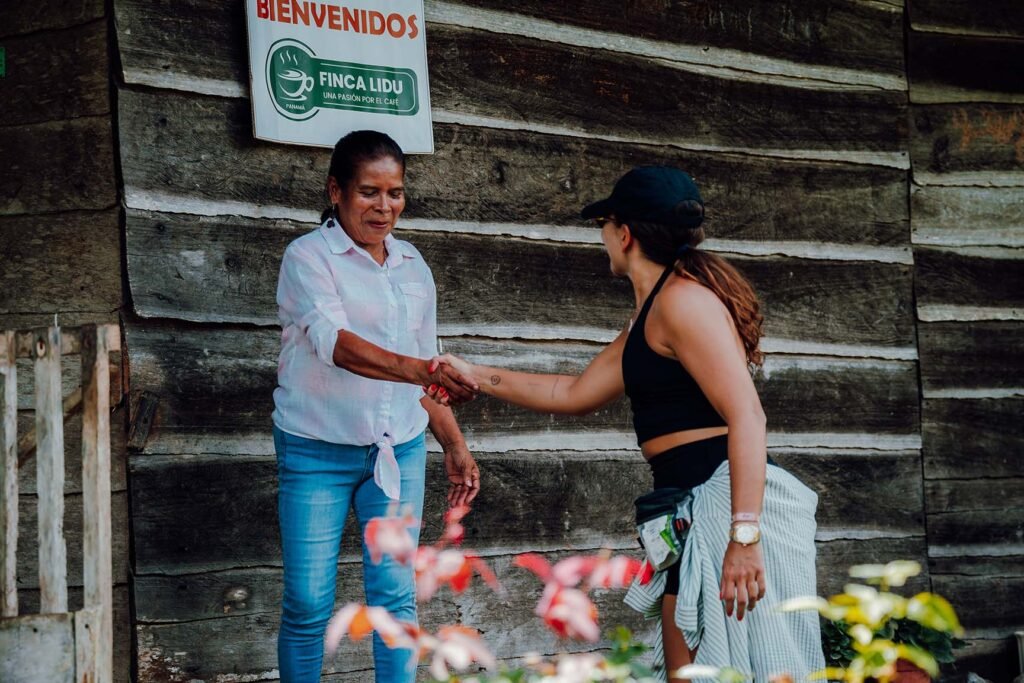
From the Plantation to the Cup: Conscious Flavor
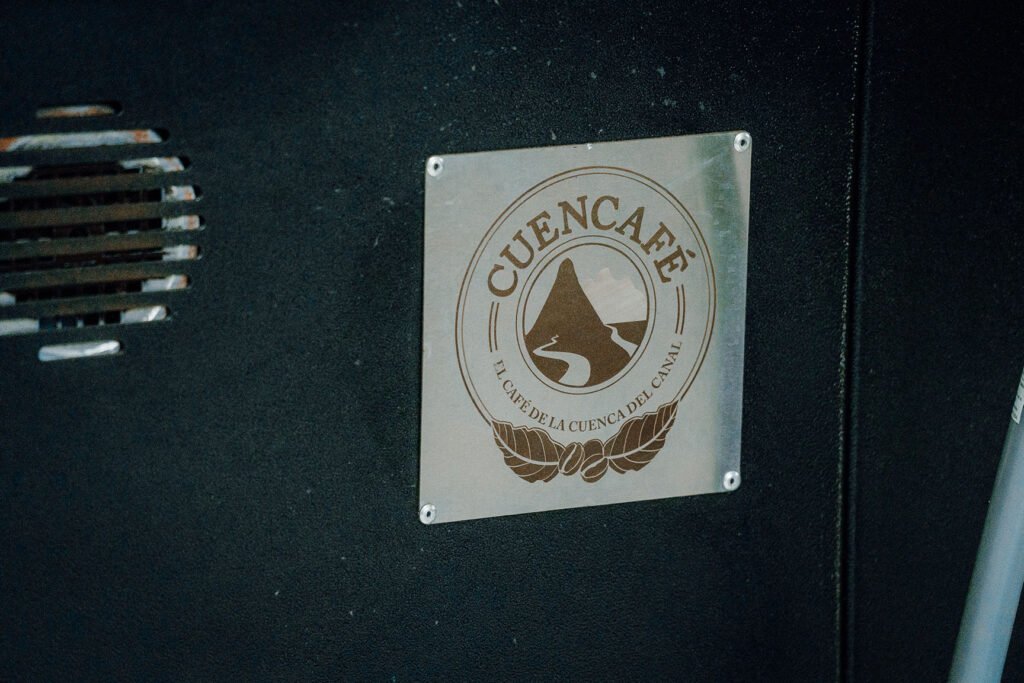
Visiting the lands of Cuencafé is to understand the Canal from another perspective, because there is no water without the basin. The The Panama Canal watershed supplies more than half of Panamanians with water and allows for the passage of thousands of vessels per year.
Aside from this project’s role in conserving Panamanian water, it is a source of stable income for coffee growers, allowing families to improve their economic situation without resorting to practices that degrade the environment.
The Canal is committed to providing education and training to the producers. They receive training in sustainable agriculture practices, business management, and marketing. This gives them a sense of pride and belonging that spreads throughout the community.
A Watershed that Sustains Us All
Since the reversion of the Canal in 1999, the value of this basin has grown and it has become a source of sovereignty, biodiversity, and life. Projects such as Cuencafé show that development can be compatible with conservation when the focus remains on the community. There, in the cradle of water, the future takes root.
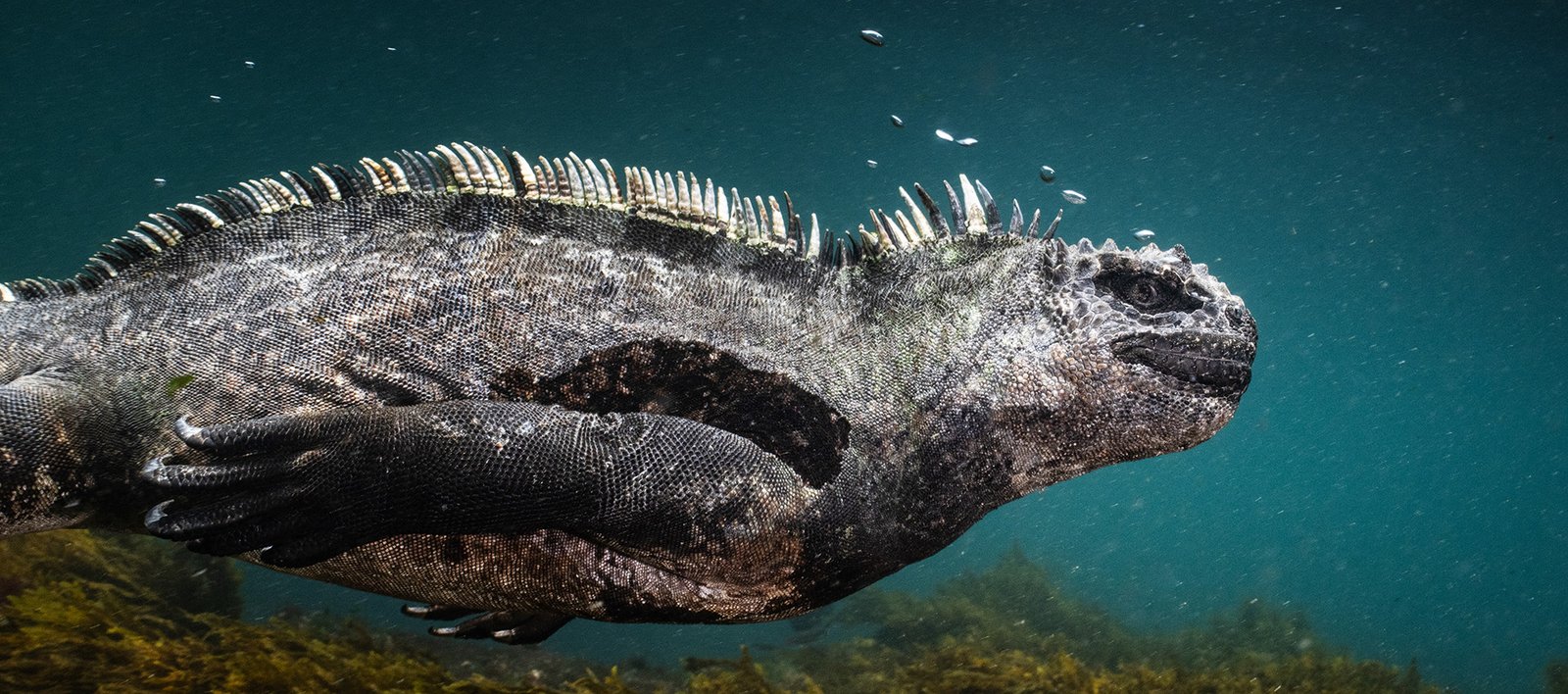



Leave a Reply